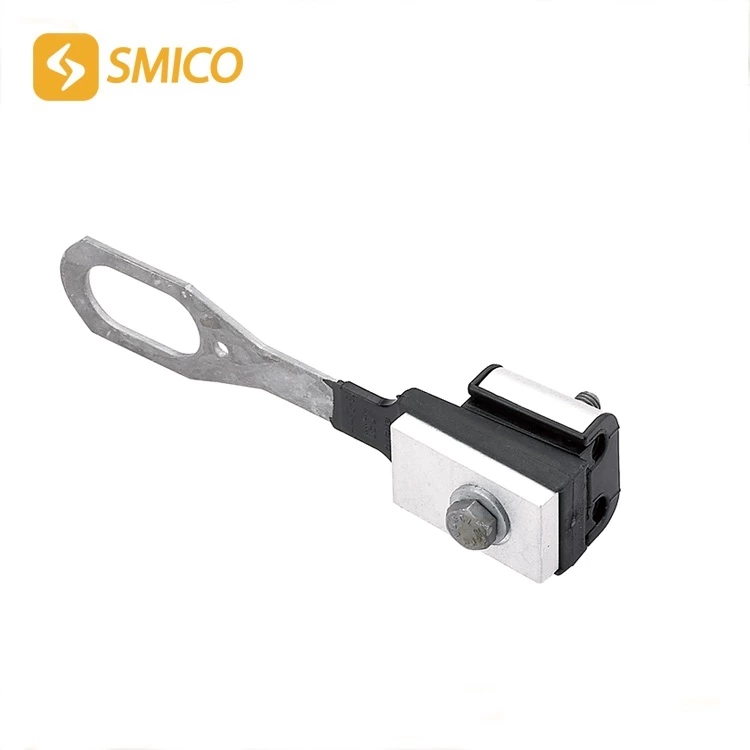Use Of Wedge-type Tension Clamps
dead end tension clamp is an important power fitting, whose main function is to fix or connect the wire and bear the tension of the wire or lightning conductor. fiber optic dead end clamp is widely used in the corners, joints and terminal connections of the power system, and is a key component to ensure the stable operation of the power line.
fixed dead end clamp According to the different structures and installation conditions, it can be roughly divided into two categories:
1. The first type of tension clamp mainly bears the full tension of the wire or lightning conductor, and its clamp grip is not less than 90% of the rated tensile strength of the installed wire or lightning conductor, but it does not act as a conductor. This type of clamp can also be removed after the wire is installed and used separately. Common bolt-type tension clamps and wedge-type tension clamps belong to this category.
2. The second type of tension clamp not only bears the full tension of the wire or lightning conductor, but also acts as a conductor. Since this type of clamp is a conductor, its installation must comply with the provisions of the relevant installation operating procedures. Once installed, this type of clamp can never be disassembled again, so it is also called a dead wire clamp.
When evaluating the reliability of the tension clamp, the main considerations are its ability to withstand tension, electrical conductivity, ease of installation and maintenance, and stability and durability under different environmental conditions. In addition, the material selection, manufacturing process and quality control of the tension clamp are also important factors affecting its reliability.
In order to ensure the stable operation of the power system, the tension clamp needs to be inspected and maintained regularly, and aging or damaged parts need to be replaced in time. At the same time, when selecting and using the tension clamp, the appropriate type and specification of the clamp should be selected according to the actual situation to ensure that it can meet the operation requirements of the power system.

